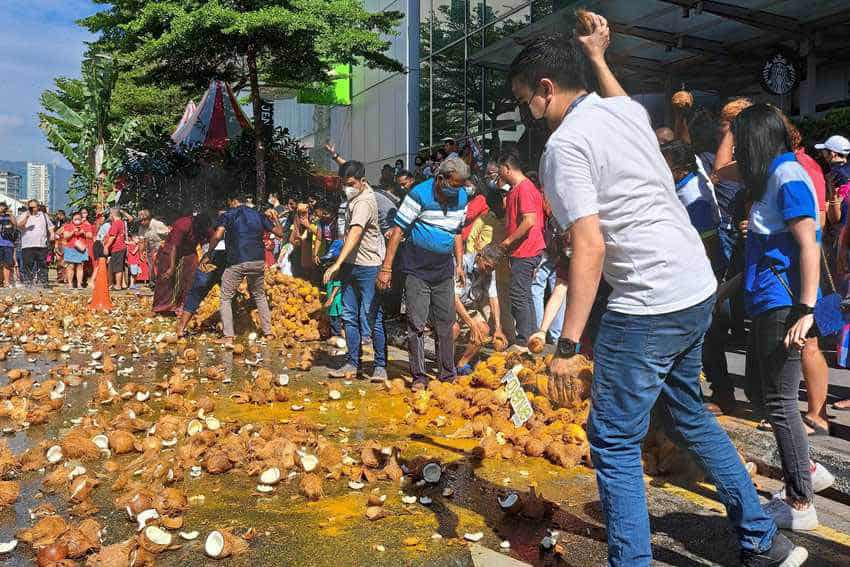
Thaipusam in Penang: The Day When George Town Bathed in the Scent of Coconut
By Teh Chin Liang
GoNOMAD Senior Writer
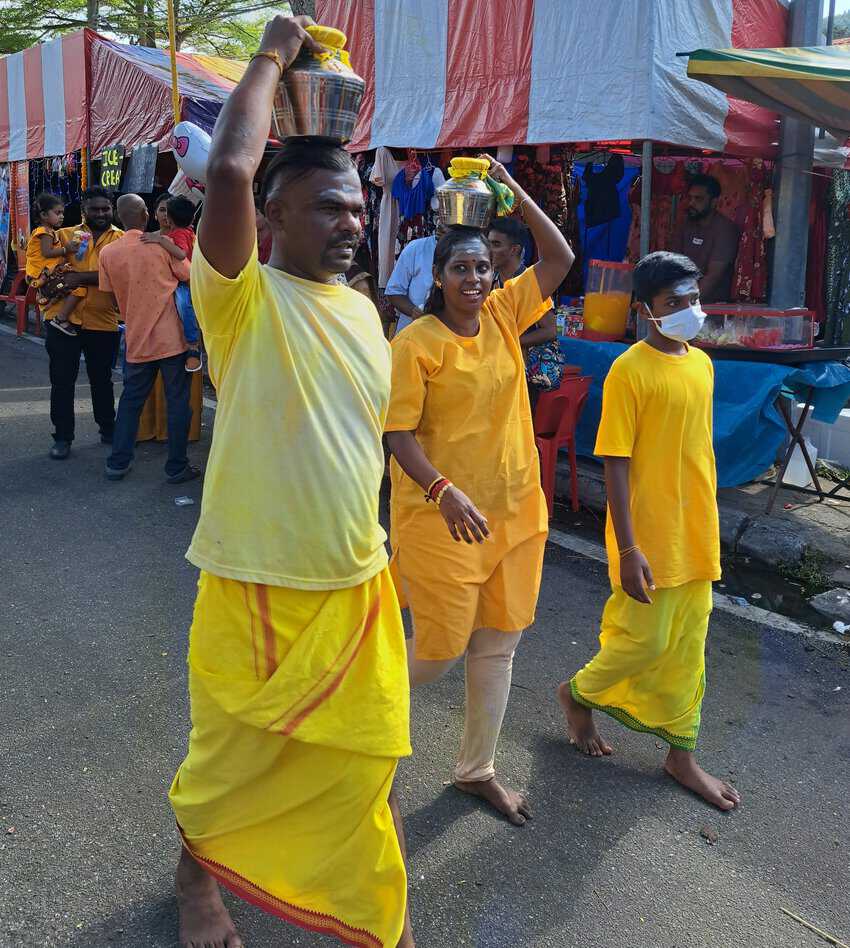
When flying over Penang, an island city on the northern peninsula of Malaysia, the first thing that comes into view is The Sultan Abdul Halim Muadzam Shah Bridge, the second Penang bridge.
From the air, this magnificent 15-mile-long bridge resembles a slithering serpent, with coils stretching across the Straits of Malacca and connecting the mainland with the island.
UNESCO site with vibrant festivals
One side of the island is a bustling city with a modern skyline scattered among the UNESCO buildings. The other side sprawls the rolling hills covered in undeveloped lush greenery.
The island is more than what you see from a bird’s eye view. Zoom in, and you will see a microcosm of a melting pot where Malay, Chinese, and Indian cultures intertwine, culminating in a potpourri of festivals throughout the year.
Festival that pays homage to Lord Murugan
Thaipusam is a one of the vibrant festivals celebrated on this island. Even though I am not a Hindu, I am always in awe of the beauty and significance this festival brings.
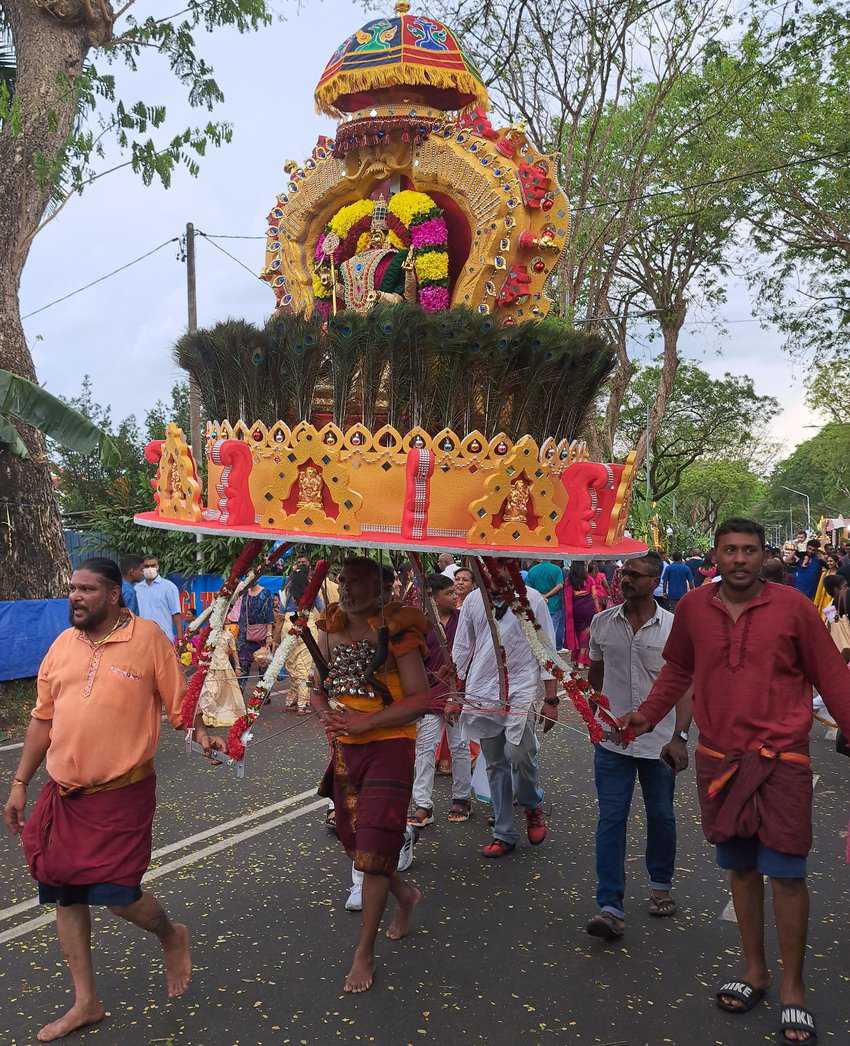
Thaipusam is to celebrate Lord Murugan’s victory over the demon Tarakasura. According to Hindu mythology, Murugan, the son of Parvati, defeated the demon Tarakasura with a sacred spear bestowed upon him by Parvati.
The tradition took root in Penang by Indian settlers in the 18th century. Since then, the festival has blended a rich tapestry of local diversity and taken on its unique identity.
After a three-year hiatus due to the pandemic, the Thaipusam celebration made a grand comeback to George Town this year.
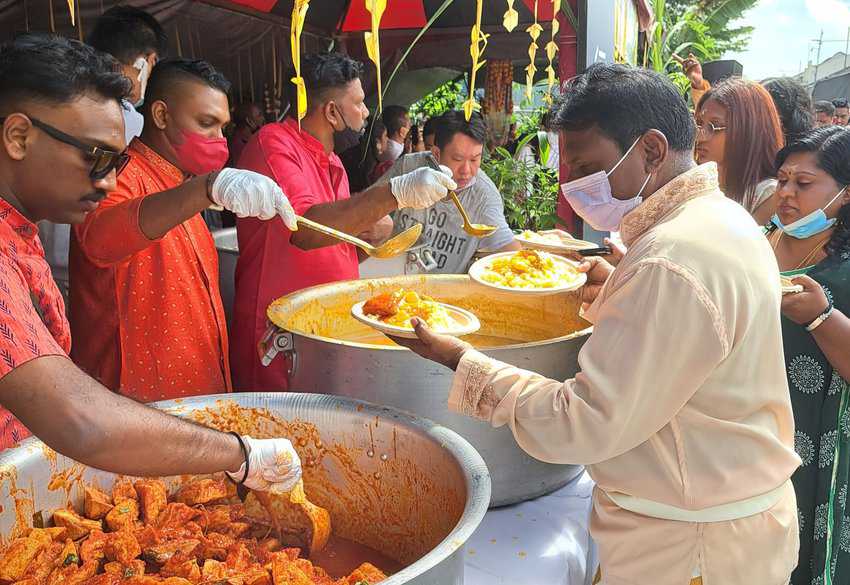
Makeshift stalls with colorful decorations
In the days leading up to Thaipusam, Thanneer Panthals were assembled along the busy streets of George Town. Thanneer Panthals, which originated in Tamil Nadu, India, are makeshift stalls where pilgrims and travelers are offered water to drink in the hot summer months.
The stalls were decked out with a colorful cardboard facade, painted with Hindu symbols, draped in colorful fabrics, and festooned with garlands of flowers and banana leaves and stalks. The spiritual art was a feast for the eyes, building anticipation for the upcoming festival.
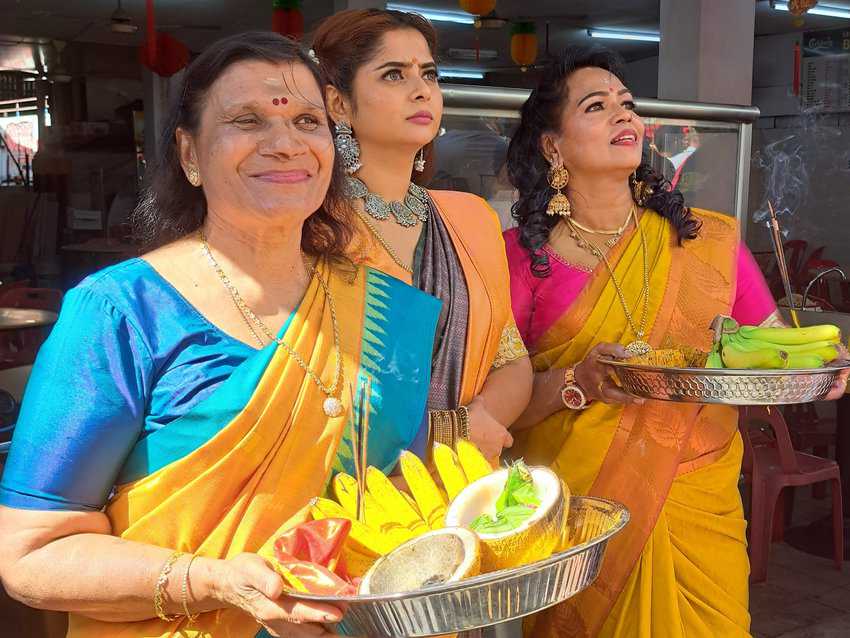
The town transforms into a holy pilgrimage site
The day before Thaipusam, George Town was transformed into a holy pilgrimage site, teeming with devotees in their vivid traditional garments. The festive music from the high-hanging speakers set the mood for people to groove.
Volunteers served complimentary curry and rice to the crowd at the Panthals.
Mountains of coconuts piled up on the sidewalk, their husks glistening in the sun, surrounded by incense coils that filled the air with the scent of sandalwood, blurring the streets with swirls of smoke.
In Penang, Thaipusam is celebrated by Hindus and Chinese alike. A small group of Chinese devotees stood out amid the sea of Indian devotees as they busied themselves stacking up coconuts in preparation for the arrival of the chariots
Procession of two Chariots
The main highlight on the eve of Thaipusam is the procession of two chariots, the golden chariot carrying the vel (spear) and the silver chariot the statue of Lord Murugan.
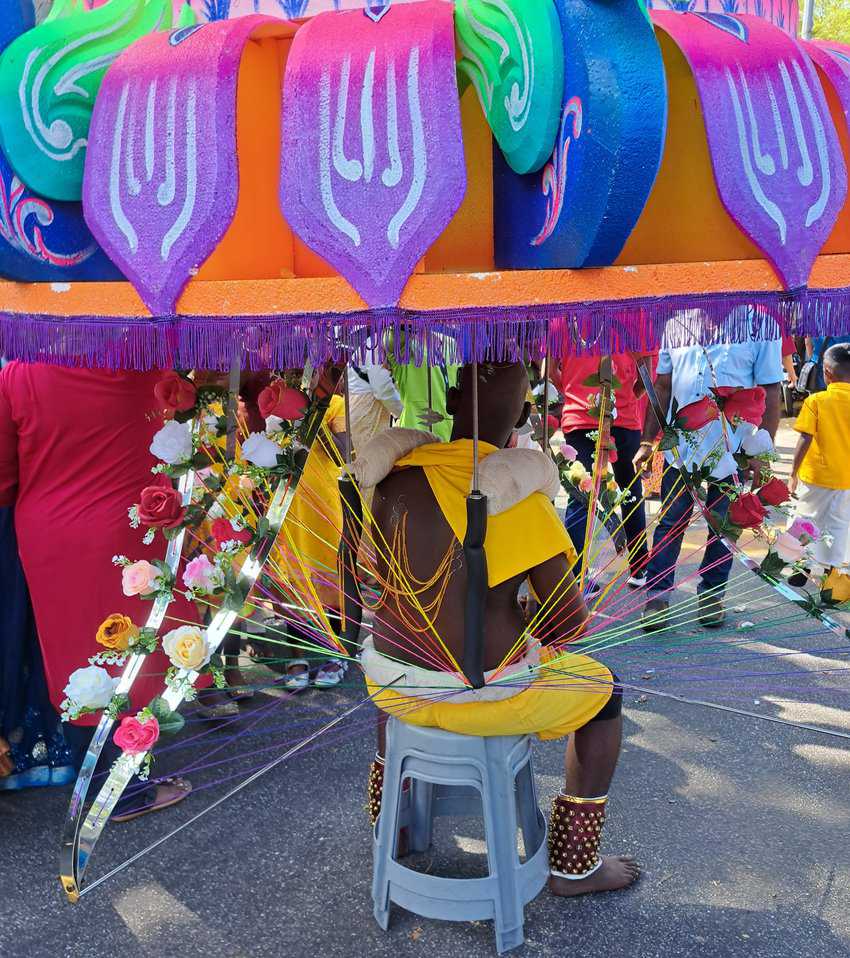
At the break of dawn, the Sri Mahamariamman Temple, Penang’s oldest Hindu temple nestled in the vibrant, spice-scented enclave of Little India, was swarmed by a sea of devotees. Two burly oxen pulled the golden chariot to begin a day-long slow procession. The chariots came to George Town at around 10 in the morning.
As I stood among the throng of people, a sudden thunderous beat of drums silenced the din of the crowd, announcing the arrival of the chariots. Devotees and visitors poured out to the sidewalks, some holding coconuts, others with their cameras ready.
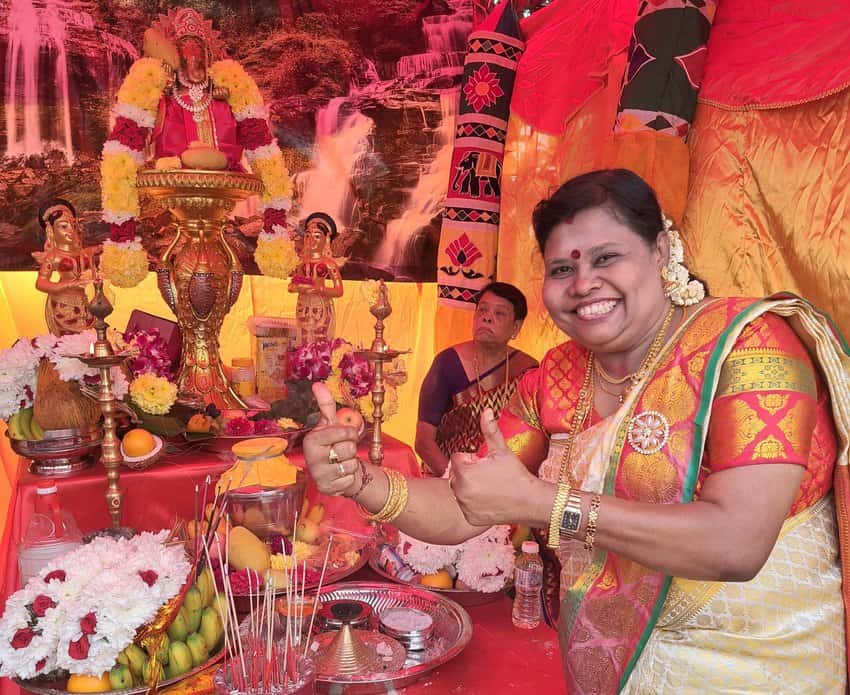
Splatter-filled spectacle
A man, who seemed to be a tourist, tapped on my shoulder, asking me what was going on. Before I could answer him, a loud crack echoed throughout the street.
Thud, Thud, Thud … the sound of the impact unrhythmic, reverberating through the air.
One by one, the devotees picked up coconuts and slammed them onto the road with all their strength. It was a splatter-filled spectacle.
The water flew as the shell struck the ground, spilling every direction and blurring my vision that I had to take off my glasses.
Cheers and shouts erupted. The street was inundated with the sweet scent of coconut, mingling with the exuberance of the jubilant crowd. The festive mood allured me to pick up a coconut and hurl it to the ground. The coconut made a faint thud, rolled away unbroken
“Hold the coconut with both hands, one on either side,” A man instructed, demonstrating by using his hands.
I gave it another try. This time, I held the coconut firmly in both hands, lifted it over my head and with all my might, drove it downward.
Crack!
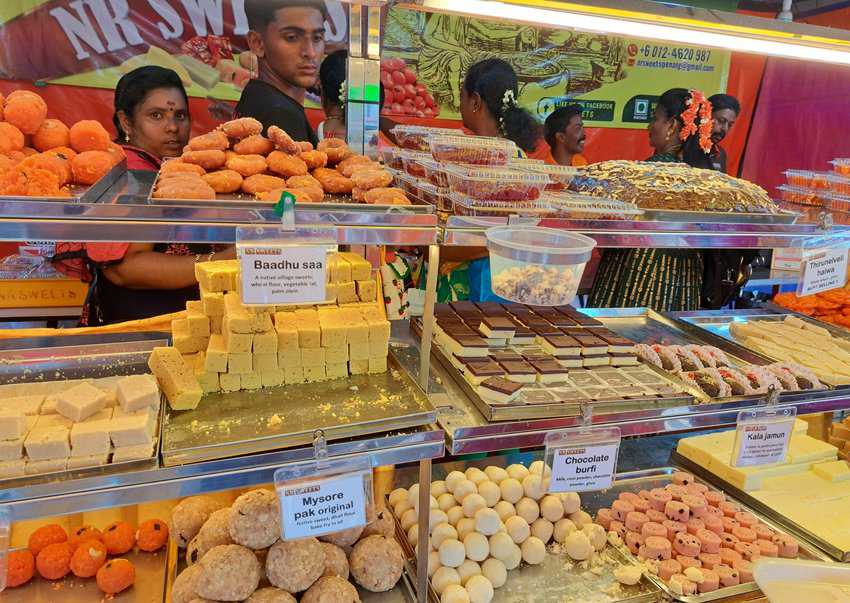 The impact crushed the shell into pulps, water seeping out and making its way to my slippers.
The impact crushed the shell into pulps, water seeping out and making its way to my slippers.
The man raised his eyebrow, grinned, and gave me a thumbs up.
Coconut breaking is a symbolic gesture in Hindu culture, representing the devotees’ willingness to let go of their ego and attachments to achieve spiritual enlightenment.
Full throttle festivity
Two oxen, lavish garlands dangling from the horns, pulled the chariot through the sea of devotees. The devotees made their way to the chariot with a fruit platter to offer to Lord Murugan.
I waded through the deluge of coconut water and flesh, my face an amalgam of coconut and sweat. The sound of a roaring machine approaching made everyone turn to look. A wheel loader rolled onto the street. Its enormous bucket poised to clean up the pulps. The mess was cleaned up within minutes.
It was only the Thaipusam’s eve, but the festivities were already in full swing.
The largest Lord Murugan temple outside of India
The Thaipusam day largest celebration took place at Waterfall Road, where the ornate Arulmigu Balathandayuthapani Temple stands imposing on a hilltop.
From below, I could see a stream of devotees winding their way up the 500 steps to the largest Lord Murugan temple outside of India.
The Thaipusam morning saw a mass of devotees clad in yellow and saffron robes, some balancing milk pots on their heads. A towering statue of Murugan, the elephant-headed deity, loomed over the mass of people.
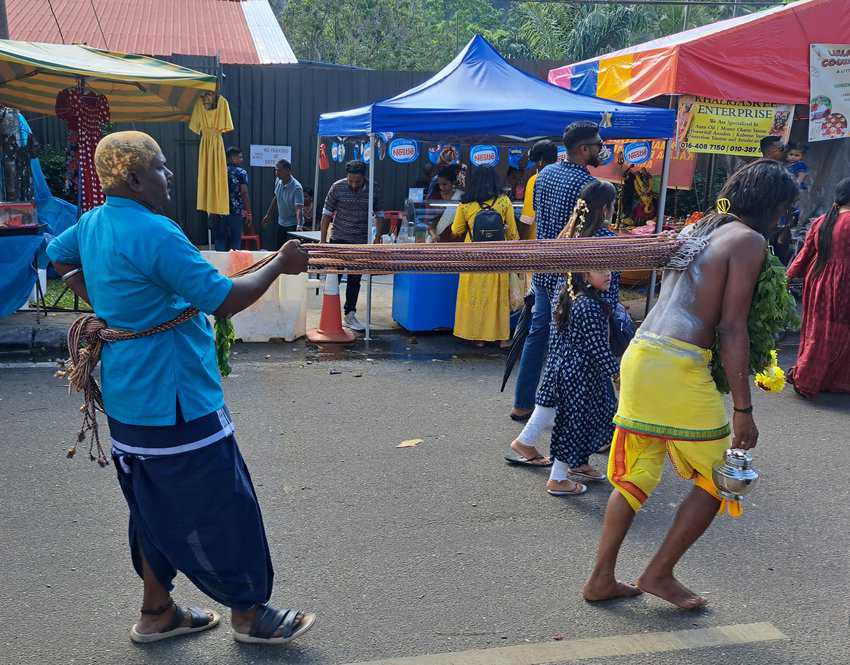
Kavadi – a test of faith and endurance
One of the highlights of the Thaipusam celebration is to see the devotees carrying the kavadi, a portable altar decorated with flowers, beads and ornaments.
The kavadi carriers pierce their cheeks, tongue, or other body parts with small metal skewers and hooks.
This act of self-sacrifice symbolizes their fervent devotion to Lord Murugan, their penance for past sins, and fulfillment of vows made to him. Some people may find the sight unsettling.
The sound of loud drum music signaled the beginning of the Kavadi procession. The sea of people parted, making way for a long, orderly line for the procession to pass through.
A man carrying a heavy-looking Kavadi marched through, his eyes appearing hypnotized. A group of people escorted him along to make sure he was steady. A thin metal rod pierced through his cheek, hooks digging into his flesh and stretching the flap of his skin.
He trudged along, paused, and sat down for a rest, sweat dripping from his forehead. One of his escorts held a bottle of water to his mouth. He took a sip before standing on his feet, continuing his walk of faith, all the way to the temple.
Inside the temple, chandeliers cast a soft, spiritual light on the devotees, guiding them across the walkway to the shrine. I fell into a line with other devotees, holding a half of coconut with a piece of camphor (a type of waxy incense comes in the form of white crystal) lit up on fire. Everyone was reverent in the face of Lord Murugan.
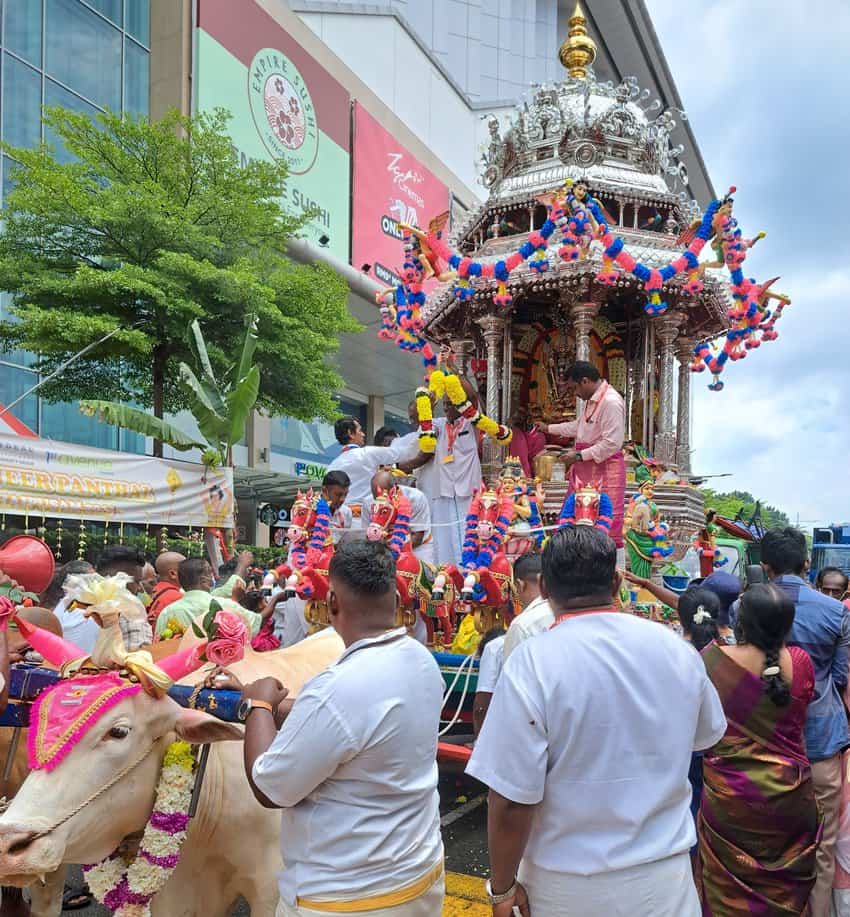
An array of sweet treats
Outside the temple. an assortment of Indian snacks and sweets, from Laddu, Gulab jamun to Muruku, lined up the sidewalks for purchase. The hodgepodge of treats came in different textures and colors, luring in visitors to pamper their tastebuds.
Thaipusam in Penang is a vibrant and colorful celebration that will satisfy all your senses. The sight of the colorful processions and garments, the smell of spices and incense in the air, the sound of the drums and chants, the taste of the Indian treats and the touch of the holy coconut water underneath your feet all make an unforgettable experience.
- Almaty: Cultural Crossroads Beneath Tian Shan - May 4, 2024
- Chasing the Northern Lights: Tips and Insights from a Pro - April 23, 2024
- Penang’s Chinese New Year Extravaganza! - March 30, 2024


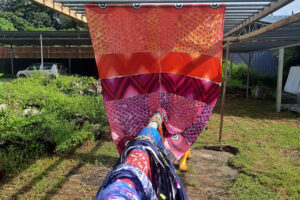

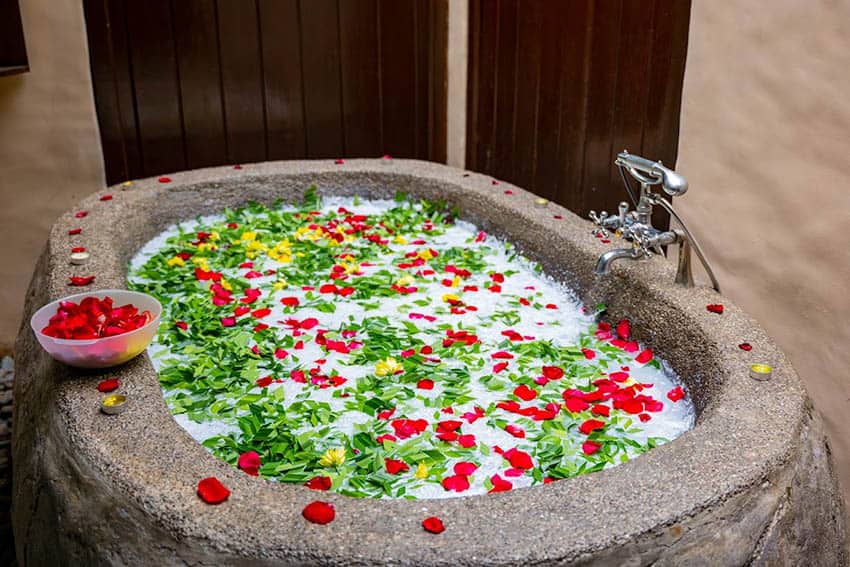
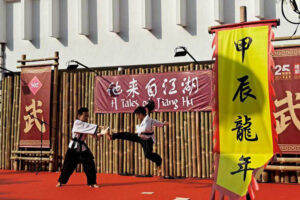
For more Ong2 or good luck, I invite all to coconut crushing. And line the long que for free vege food. Be like the locals and enjoy the cramping together as you climb the hills. This is the time you can immerse and be a nobody in the crowded area. Highly recommend. Thanks CL for great in sight
I like festivals and this one looked really cool. It’s so interesting how different cultures celebrate. I enjoyed reading this article and the pictures were great. It would have been a lot of fun being there. Chin Liang Teh another fine job with this article.
Interesting. Good article love to fly to watch the festival in Penang.
Fascinating to read about the Thaipusam festival. I visited Penang earlier this year and really loved it. This article by Chin Liang Teh makes me want to go back.